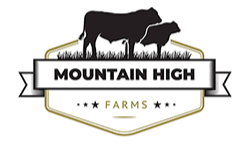
The Hidden Dangers of Untraceable Meat — and Why Traceability Matters
In today’s global food system, traceability — the ability to follow an animal’s life and feed history from farm to fork — is the foundation of food safety. When this chain is broken, consumers face invisible but serious risks. Meat from untraceable sources may contain antibiotic residues, hormones, pesticides, heavy metals, and other contaminants that can harm human health in the long term.
This issue is especially important for Armenia, where the majority of meat sold on the market — including, and especially, that imported from abroad — is of untraceable origin. This circumstance leads to a number of risks, which we believe are extremely important to be aware of.
The Risk Behind the Feed
In today’s global feed production industry, economic pressures and the relentless pursuit of higher yields have driven many producers to compromise quality for profit. To maintain competitiveness and meet the ever-growing demand for cheap animal feed, manufacturers often rely on low-cost fillers, chemical additives, and genetically modified ingredients that prioritize rapid growth over animal health. Synthetic vitamins, antibiotic residues, heavy metals, and pesticide-contaminated grains are frequently incorporated into feed formulations to cut costs and sustain production volumes. This industrialized approach has created a system where efficiency and profit margins outweigh transparency and safety, resulting in feed that not only undermines the well-being of livestock but also poses significant long-term health risks to humans consuming animal products derived from such systems.
This results in unmonitored concentrated feed dominating the markets. Animals raised on unmonitored concentrated feed often consume ingredients of unknown origin — sometimes contaminated with pesticides or industrial residues. These toxins can accumulate in muscle and fat. Studies have found elevated levels of lead, cadmium, arsenic, and mercury in meat from livestock exposed to contaminated feed, all linked to kidney and nervous system damage and even cancer.
A 2022 international review published in Frontiers in Public Health warned that “antibiotic residues in meat and feed represent a global health concern due to their potential to cause antimicrobial resistance and allergic reactions.” Untraceable farms often bypass withdrawal periods after antibiotic treatments, meaning residues may remain in the meat sold to consumers.
Hormones, Antibiotics, and Human Health
Growth hormones and antibiotics are widely used in industrial farming to speed up growth and prevent disease. The World Health Organization (WHO) has cautioned that the misuse of antibiotics in healthy animals directly fuels antibiotic resistance — one of the world’s most pressing public-health threats. As WHO stated in 2017:
“Stop using antibiotics in healthy animals to prevent the spread of antibiotic resistance.”
WHO, 2017
The same concern applies to hormonal residues. Although most countries restrict hormone use, unregulated or untraceable meat can carry traces that may disrupt human hormonal balance over time.
Cancer, Heart Disease, and Chronic Illness
In 2015, the International Agency for Research on Cancer (IARC) classified processed meat produced at industrial farms as carcinogenic (Group 1) and red meat as probably carcinogenic (Group 2A). The agency concluded that consuming just 50 g of such processed meat daily raises the risk of colorectal cancer by 18%. Untraceable meat often comes from poorly monitored supply chains where contamination and poor processing practices magnify these risks.
Furthermore, large meta-analyses covering nearly 2 million participants show that high consumption of untraceable red and processed meat is associated with increased rates of heart disease and type 2 diabetes. The risk grows when feed contamination or residues add to dietary chemical exposure.
Lessons from Armenia’s Recent Findings
Food-safety concerns are not abstract. In Armenia, the Food Safety Inspection Body and local researchers recently conducted tests on fruits and vegetables and found pesticide residues exceeding international safety limits. A 2025 study by Beglaryan et al. was the first to analyze chlorpyrifos levels in Armenian tomatoes and cucumbers, confirming the presence of cancer-linked residues.
While these findings concern crops, they highlight a systemic issue: if agricultural inputs and feed are not strictly controlled, contaminants easily travel up the food chain — into livestock, and eventually, into human diets.
Why Traceability Is the Solution
A reliable traceability system ensures every animal’s feed source, medication, and movement are recorded. This makes it possible to:
- Quickly recall contaminated meat before it reaches consumers.
- Verify feed and veterinary drug safety, including withdrawal periods.
- Support export and consumer confidence, showing transparency from farm to table.
The European Food Safety Authority (EFSA) and FAO both note that full traceability has repeatedly prevented large-scale food crises — such as the dioxin contamination in European pork in the 2000s — by allowing rapid identification and recall of affected batches.
Traceability isn’t just bureaucracy; it’s protection. It shields consumers from toxic residues, antibiotic resistance, and carcinogenic substances while rewarding responsible farmers who invest in clean, transparent production.
As global and Armenian research now make clear, when we lose traceability, we lose control over what ends up on our plate — and the consequences can be measured in rising cancer rates, heart disease, and resistant infections. Ensuring that every cut of meat can be traced back to its origin is the surest way to safeguard both public health and trust in the food we eat.
Authored by Ashot Boghossian, for Mountain High Farms
Leave a reply


Leave a reply